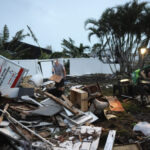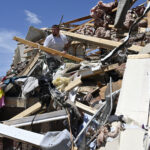Insurance coverage for exposure to mold in the environment is impossible to provide because losses cannot be quantified or defined with the current medical, scientific, biological and environmental information available, the Association of California Insurance Companies (ACIC) explained during a Feb. 5, California Assembly Insurance Committee informational hearing.
“Media hype has many homeowners believing that mold is overtaking their homes and attacking their families,” Janine Gibford, ACIC government affairs advocate, testified. “Because of this hysteria, the cost to investigate and settle such claims is escalating.”
Virtually all mold losses stem from water damage claims. The frequency and average cost per water damage claim have risen sharply in the last five years. In 1997, water-related claims paid by California homeowner insurers representing two-thirds of the market totaled $206 million. In 2001, the amount more than doubled to $431 million—a 110 percent increase. A water damage claim filed in California that cost an average of approximately $2,000 two years ago can now cost upwards of $4,500 today to repair, Gibford testified.
“Part of the reason for the hike in costs is the use of self-proclaimed ‘industrial and environmental hygienists,'” Gibford said. “Even the smallest water damage claims require expensive and unnecessary inspections from a growing number of these unregulated ‘experts.’ No certification or education is required for these individuals, and these so-called environmental inspectors are driving up the costs while doing nothing to remediate the problem.”
ACIC contends that insurers could not provide a specific policy provision that covers mold damage because virtually all consumers are constantly exposed to a wide variety of molds and there is no scientific evidence showing that it poses a health hazard. Mold is not quantifiable because insurers are at a loss as to how they would set rates and reserves to cover mold exposure.
“Insurers base rates on previous loss data, and the recent explosion of costs to mitigate and litigate mold-related water damage claims was not predicted, and therefore, never factored into rates,” Gibford said. “To date, medical and environmental experts have not been able to agree on the effects of mold, yet insurers are expected to pay for the removal of a naturally occurring bio-organism whether or not it is the result of a covered water loss on a given policy. Consumers and lawmakers alike need to understand that a ‘mold-free’ home does not exist,” Gibford added.
Was this article valuable?
Here are more articles you may enjoy.

 Here Comes Another Busy Atlantic Hurricane Season, But Will It Be as Crazy as 2024?
Here Comes Another Busy Atlantic Hurricane Season, But Will It Be as Crazy as 2024?  Harvard Settles Lawsuit by Former Student Claiming Antisemitism
Harvard Settles Lawsuit by Former Student Claiming Antisemitism  Plane Crashes into San Diego Neighborhood, Setting Homes And Vehicles on Fire
Plane Crashes into San Diego Neighborhood, Setting Homes And Vehicles on Fire  Central US Severe Weather Outbreak Caused Billions in Damages, AccuWeather Says
Central US Severe Weather Outbreak Caused Billions in Damages, AccuWeather Says 